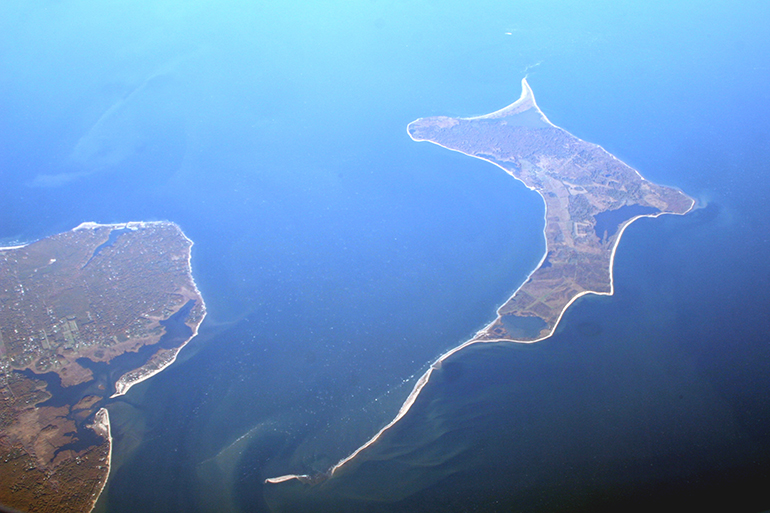Getting to Know Robert David Lion Gardiner, King of the Hamptons

My home in East Hampton sits on a hillside across the street from four marinas. There’s lots of activity here. I bought this place because of that. I like busy places. Yachts, sailboats, catamarans, deep-sea fishing boats, lovers walking along the boardwalk, kayaks, rowboats, clammer boats. Late in the day, the sun sets over the far shore. Often cars pull over and motorists get out and take pictures. It’s fun facing out on Three Mile Harbor.
Forty-two years ago when I bought this place, I quickly discovered I was living across the street from royalty. Hampton royalty.
I first saw it as a black sailing ship called Laughing Lady that flew a Jolly Roger flag from atop its main mast as it left Gardiner’s Marina for Gardiner’s Island for the day. I’d see Mr. Gardiner’s guests topside, enjoying the salt sea air and excited to be going to his private island off East Hampton. His crew manned the helm. He himself, the very rich Robert David Lion Gardiner, stood on the bow, a handsome man in a blue blazer with brass buttons. White pants. Shined shoes. Appropriate for a luncheon served by servants at his Manor House.
Mr. Gardiner was, with his wife Eunice, a member of the Hamptons social set. Very wealthy. Places in Manhattan, Palm Beach and East Hampton. He loved to talk. His mansion here on Main Street had been the Summer White House when President John Tyler visited the home of his young wife’s family. Julia Gardiner had married the President when she was 24. The only woman, a beautiful woman, ever to marry a sitting president of the United States. That was in 1844.
I got to know Robert David Lion Gardiner. When he saw Dan’s Papers distributed in the stores in town, he called me up, told me who he was — adding “the 16th Lord of the Manor” — and invited me to take a trip out to Gardiner’s Island with him. And I went. Coming aboard with me was Jim Lytton, a young photographer in town who worked for me.
And that’s how Mr. Gardiner learned I lived across the street from his marina. As we sailed out, I pointed out my house. Less than 100 yards from the marina.
He also bought an ad in the paper. A small one. But he kept it up for years. After the first year, he called to ask that I send him a bill once a year rather than monthly, so “I won’t have to be writing so many checks,” as he told me. I obliged him.
Gardiner’s Island had originally been granted by the King of England to Lion Gardiner, the first English settler in New York State, Mr. Gardiner told us, as we toured that 5-square-mile island in a bouncy pickup truck. He took us to the Manor House. Showed us where Captain Kidd’s treasure was buried, the tree where a servant living on his island was hanged for murdering another servant, as ordered by John Gardiner, the Fifth Lord of the Manor. We spent the day on the island.
I went out several other times to the island with Gardiner along with others. And I got to listen to the same stories he told me, now told to others, over and over. Indeed, that’s all he ever talked about.
Once he called me on the phone to complain that our local congressman had just announced he’d seize the island to establish it as a Gardiner’s Island national historic monument. I should write about it. He would never do that. Then he went on and on about the island again. And I, busy at work, tried to get a word in edgewise to get him off the phone. I was 28. He was 56 or so. Jeez.
But I did write about it. Gardiner, still upset, then threw his hat into the ring to challenge our congressman for his seat. Gardiner lost. But he’d made his point. His island from then until now remained in the Gardiner family’s hands.
One day, sitting out on our front deck with my wife and 5-year-old daughter watching the passing scene, I saw Gardiner get out of the back of his chauffeur-driven limousine by his marina. He waved to us, then began planting flowers adjacent to the marina’s sign. Finishing, uninvited, he walked over and sat with us awhile, enjoying the iced tea we offered him.
At one point, he turned to my daughter, leaned over, and showed her the solid gold rings he wore on his fingers, now covered with dirt.
“When you grow up,” he told her, “only accept rings made from pirate gold. That’s what these are. Came from Captain Kidd himself.”
He then told (or retold) the story of how he and his wife had gone to London to attend a ball celebrating the coronation of Queen Elizabeth II in 1953. He had danced with the queen, he said.
“Back in 1701,” he said, “after Captain Kidd was hung in London, John Gardiner, who oversaw the burying of the treasure, dug it up and made a list of everything that was there. It was a long list of gold, diamonds and coins. He turned the treasure over to the authorities who came from Boston to get it, and they shipped it back to England. Now here I was, dancing with the queen. And I took out John Gardiner’s old list from my breast pocket. ‘Your people must have made a list when they received it,’ I told the queen. ‘I wonder if it matches what we sent.’ She sent for that list. Things were missing. Things had been pilfered along the way.”
We went to a dinner at his East Hampton mansion. On the wall in the front hall was a painting of his wife Eunice made by Salvadore Dali. “Beautiful, isn’t she?” he asked us. But she was in Palm Beach that day. “I commissioned it.”
Robert David Lion Gardiner, age 93, died in 2004 and is buried in the South End Cemetery by Town Pond between the graves of two other former Gardiners. But his obelisk is taller.
And, oh, there’s so much more to tell about this longtime king of the Hamptons.



